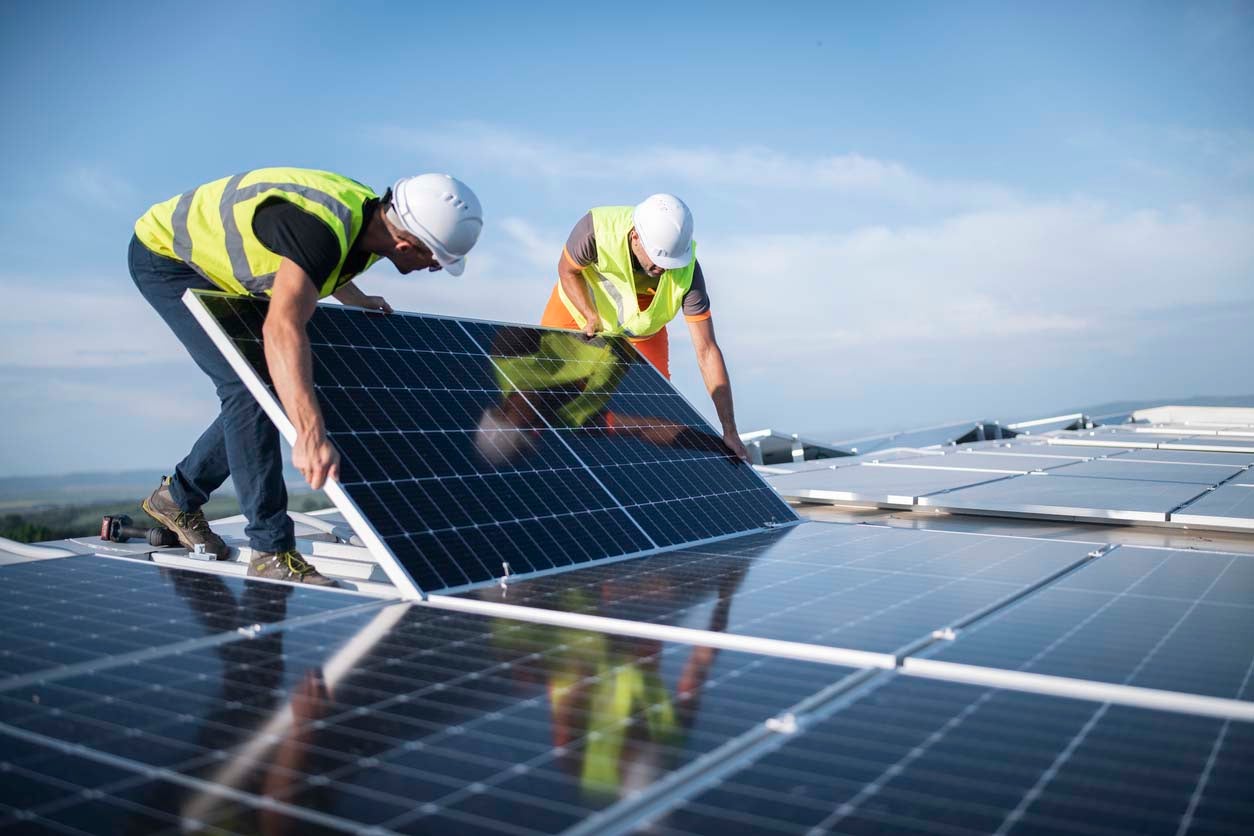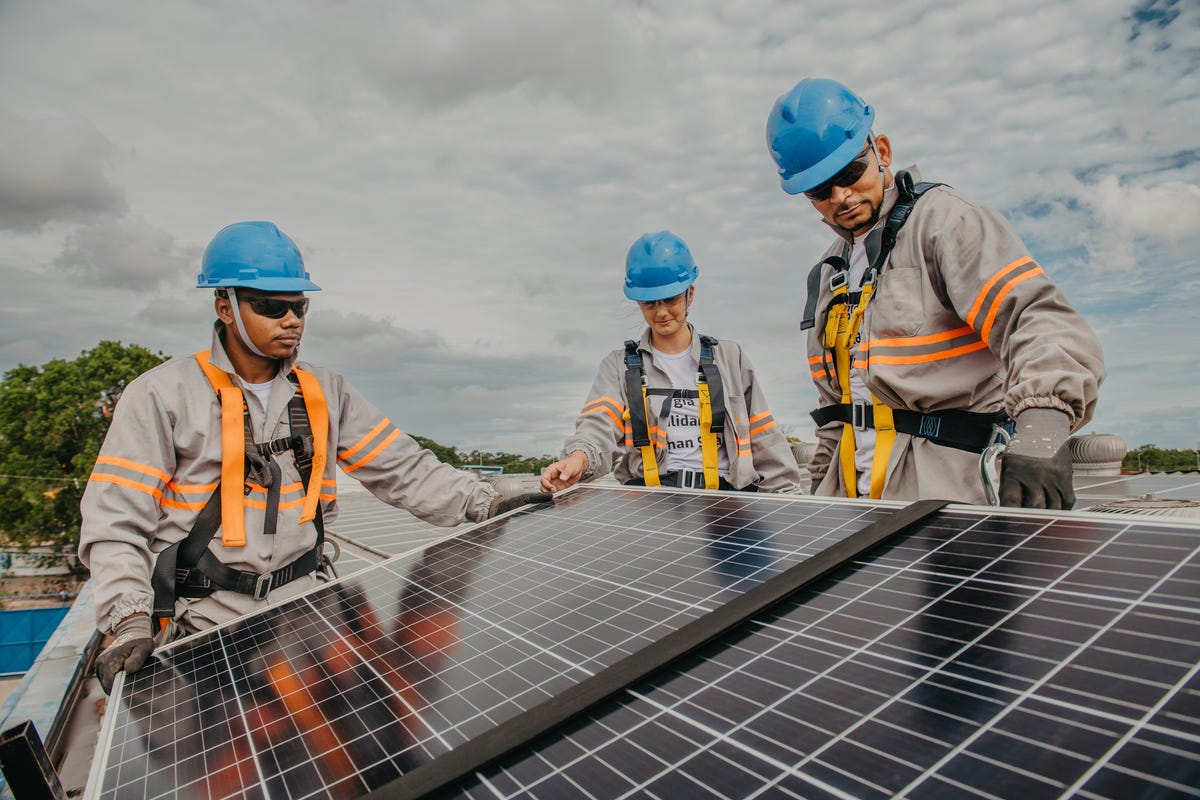Unknown Facts About Solar Installers Pennsylvania
Unknown Facts About Solar Installers Pennsylvania
Blog Article
Solar Energy Providers PA: Our Company Concentrates On The Installation And Management Of Photovoltaic Energy Systems
History and Advancement of Photovoltaic Panel Business
The creation of solar panel companies can be traced back to the 1800s when Alexandre Edmond Becquerel found the photovoltaic impact. Would he have envisioned how his discovery would change the method we harness energy?
Early Starts

In 1954, Bell Labs developed the first useful photovoltaic cell. This marked a considerable milestone in the history of solar energy. They were at first utilized to power area satellites, but who knew this was simply the start?
Development and Development
- In the 1970s, an energy crisis resulted in increased interest in renewable resource sources, consisting of solar power.
- By the 1990s, developments in innovation and increasing environmental awareness led to the development of solar panel companies worldwide.
A New Age
As we got in the 21st century, the solar market witnessed an exponential growth. The demand for tidy and renewable resource brought about a new age in the solar panel industry.
Interesting Realities
- The world's first solar power station was integrated in 1982 in Hisperia, California.
- By 2019, solar energy had become the world's fastest-growing source of power.
Indeed, the journey of solar panel companies has been amazing, hasn't it? The future holds enormous potential, with continuous developments leading the way for a sustainable future. Can we picture a world powered totally by solar energy?
Moving on
Today, solar panel companies continue to innovate, pursuing more effective and cost-efficient solutions. The development of solar power has actually come a long method, and yet, the journey has actually simply started.
The Core of Solar Panel Production
Ever question what goes into creating those shiny, sun-loving solar panels? The process is as excellent as the end item (Solar Panels Pennsylvania). High-purity silicon, the primary ingredient in photovoltaic panels, undergoes different changes to ensure its effectiveness and resilience
From Sand to Silicon
Crystalline silicon, the foundation of a lot of solar panels, originates from easy sand. It's a remarkable journey, isn't it? The sand undergoes a high-temperature response with carbon to form silicon. This isn't just any silicon. The silicon used in photovoltaic panels is "solar-grade," with a purity of 99.9999%. It's this pureness that enables the panels to efficiently convert sunlight into power.
Ingot Development
Once the silicon is pure enough, it's time to form ingots. Picture a big, round block of strong silicon. How is get more info this attained? Through a process called Czochralski process, where the silicon is melted and after that slowly recrystallized. It's a sluggish dance of science, resulting in a solid product that is almost as pure as the raw silicon itself.
Slicing into Wafers
The ingots are then sliced into wafer-thin pieces, like slicing a loaf of bread. Each piece is a prospective solar cell, waiting to harness the power of the sun. Did you know that the silicon wafers are only about 200 micrometers thick? That has to do with half the thickness of a human hair! The process requires precision and perseverance, however the outcome is a set of wafers prepared to be developed into solar batteries.
Creating Solar Battery
With the wafer prepared, it's time for the magic to occur. The silicon wafer is 'doped' with other elements like phosphorous and boron to produce an internal electrical field. It's this field that allows the conversion of sunlight into electrical energy. Complex, isn't it?
Assembly and Quality Assurance
Solar cells resemble puzzle pieces that come together to form a photovoltaic panel. The cells are soldered together in a grid-like pattern, then covered with a protective layer of glass. The final step includes extensive quality control checks. After all, it's important that every solar panel performs at its peak, would not you agree?
Expert Pointer
Constantly remember that even the most efficiently produced solar panel can lose efficiency due to dirt and debris accumulation. Routine cleansing can substantially improve your panels' efficiency.
Understanding the Ecological Impact of Solar Panel Companies
Ever contemplated the ecological footprint of a solar panel business? Green innovation, such as solar, has transformed our energy landscape, however what about the behind-the-scenes impact?
The Production Process: A Double-Edged Sword
The production procedure for solar panels demands a considerable quantity of energy. This process, called 'em bodied energy', can be deemed a form of 'energy financial obligation'. It's a little like borrowing today's sunshine to power tomorrow's energy needs. However stress not, the energy payback time is often much shorter than you 'd believe!
- The energy payback duration for solar panels is normally 1-4 years.
- After this period, the energy produced is basically carbon-free.

Life After Decommission
And what happens when a solar panel reaches completion of its life-span? Can it just be tossed into the garbage? No, that would not be very green, now, would it?
A practical solution is recycling. While solar panel recycling is still in its infancy, it holds a world of potential. Recycling not only keeps materials out of land fills however likewise minimizes the need for brand-new raw products.
Accountable Sourcing: More Than A Buzzword
Where does the silicon come from, you ask? Sadly, the industry's demand for silicon and rare minerals can cause damaging mining practices. Responsible sourcing is for that reason crucial to minimize damaging environmental effects.
Decreased Carbon Emissions: The Larger Photo
Let's not forget the larger photo: solar power considerably lowers carbon emissions. Once set up, solar panels generate tidy, renewable resource, balancing out their preliminary manufacturing footprint.
In other copyright, the ecological effect of solar panel companies is a complicated issue. With accountable practices, the pledge of a cleaner, greener future is well within our grasp.
Financial Performance and Market Share of Photovoltaic Panel Business
Ever questioned why some photovoltaic panel companies - Residential Solar Panels PA outshine others in the market? What sets them apart? The key depend on their financial performance and market share
Financial Efficiency: An Important Sign
Financial performance plays an essential role in the success of any business. For solar panel companies, it's no different. Strong monetary performance enables these business to buy advanced technology, research study, and development, consequently creating top quality, effective solar panels.
But how do they achieve this? With a concentrate on expense efficiency and strategic investments. Companies that manage to minimize production expenses without jeopardizing on quality tend to fare better in the market.
Market Share: A Step of Success
Market share, on the other hand, is a direct reflection of a company's popularity amongst customers. A high market share means more homeowners are picking their photovoltaic panels over competitors.
So, what's the secret dish for getting a bigger market share? It boils down to consumer complete satisfaction and brand credibility. Companies that prioritize consumer requirements and maintain a favorable brand image are most likely to record a bigger share of the marketplace.
- Consumer Satisfaction: Solar panel companies that deliver reputable items and extraordinary customer care tend to have greater consumer fulfillment rates.
- Brand Reputation: A strong brand reputation is constructed over time through consistent delivery of quality product or services.
Financial Efficiency and Market Share: The Cooperative Relationship
Interestingly, the relationship between monetary efficiency and market share is not one-sided. They feed off each other. A strong financial efficiency can increase a company's market share, while a high market share can improve financial performance.
As a photovoltaic panel business, stabilizing these 2 elements is important for long-term success. A business that disregards either of them may discover it challenging to keep its position in the competitive solar industry.
The Takeaway
So, what does all this mean for you? Whether you're a property owner wanting to install photovoltaic panels or a financier eyeing the solar market, comprehending the monetary performance and market share of photovoltaic panel business is vital. They are crucial indicators of a business's health and capacity for future development.
Report this page